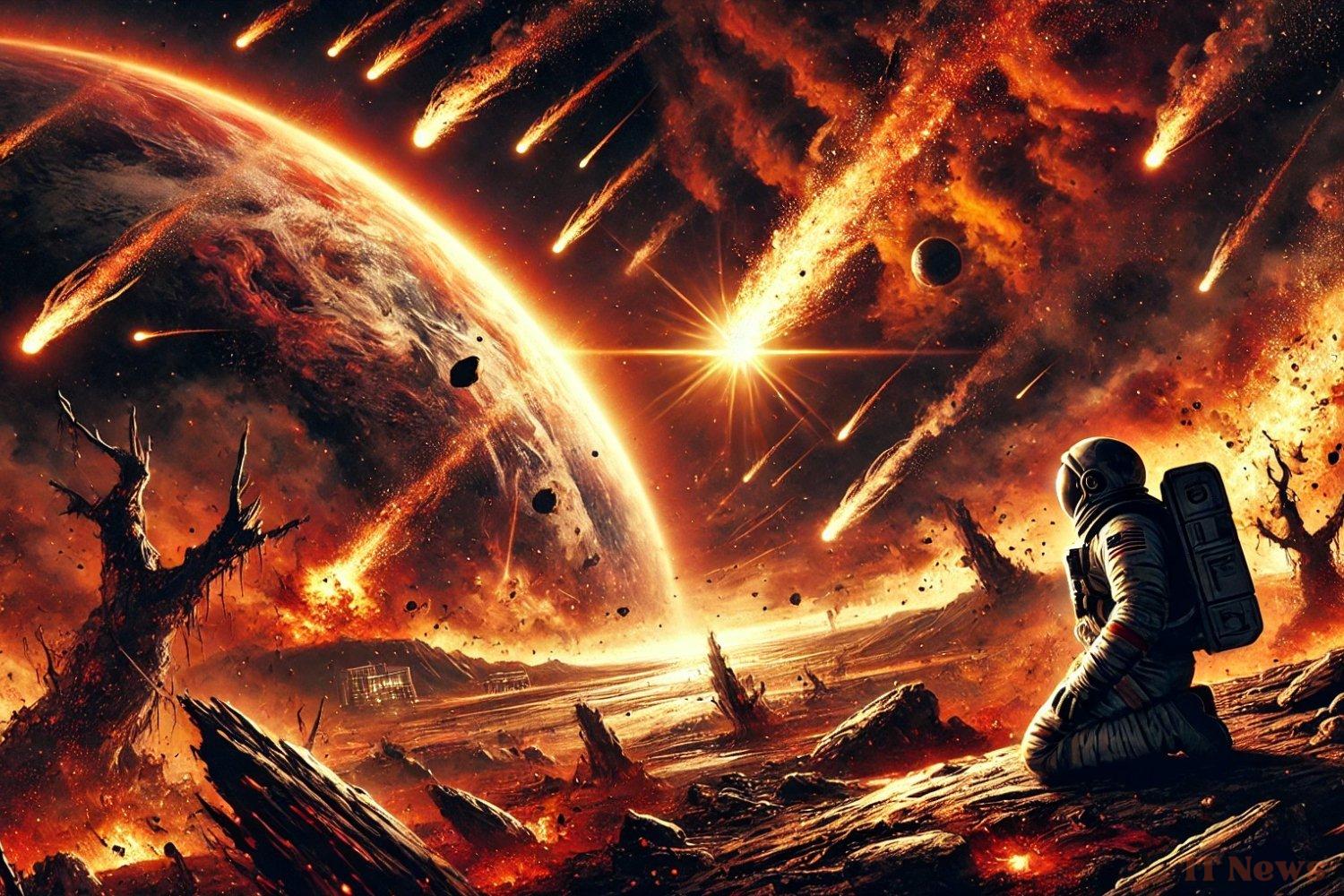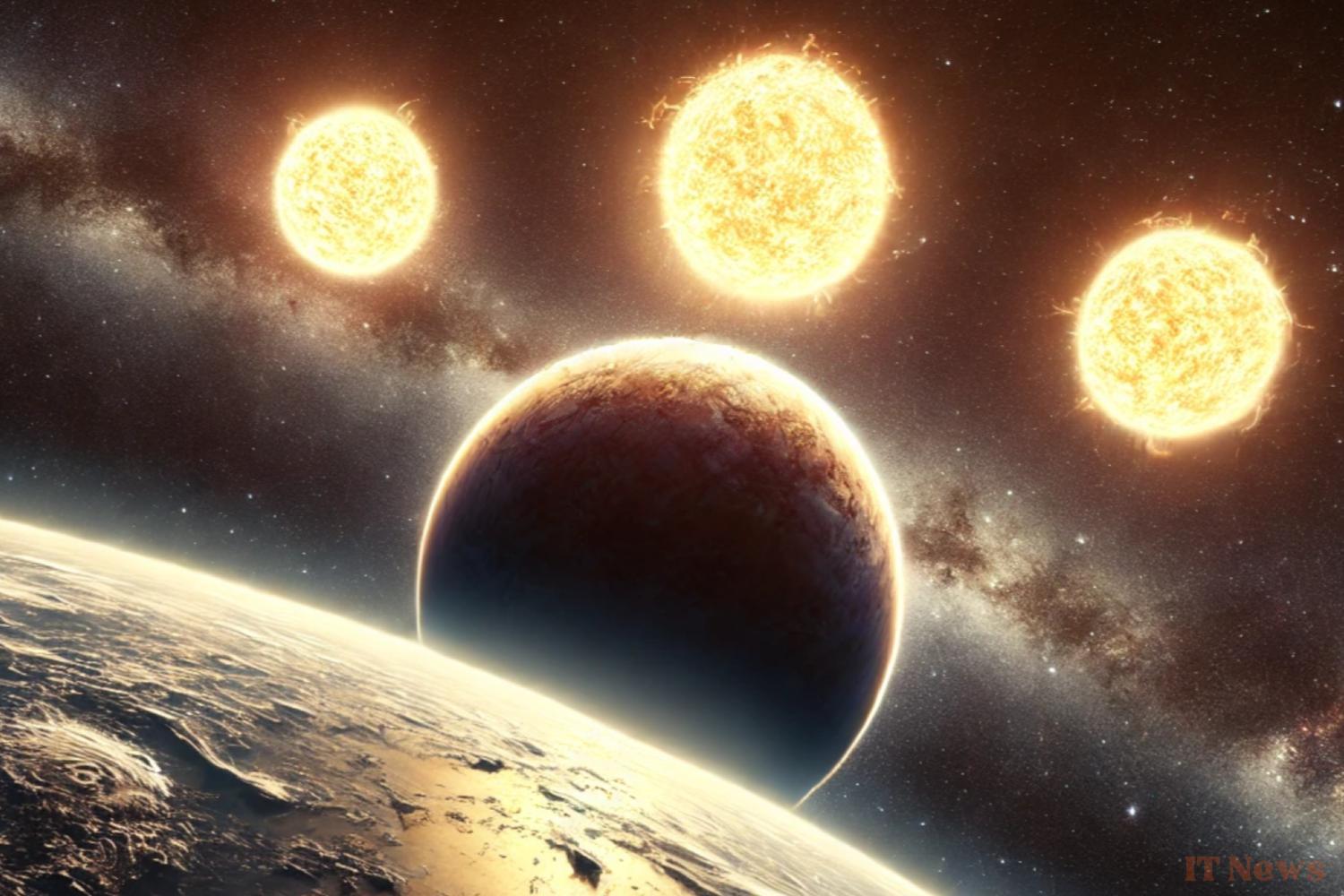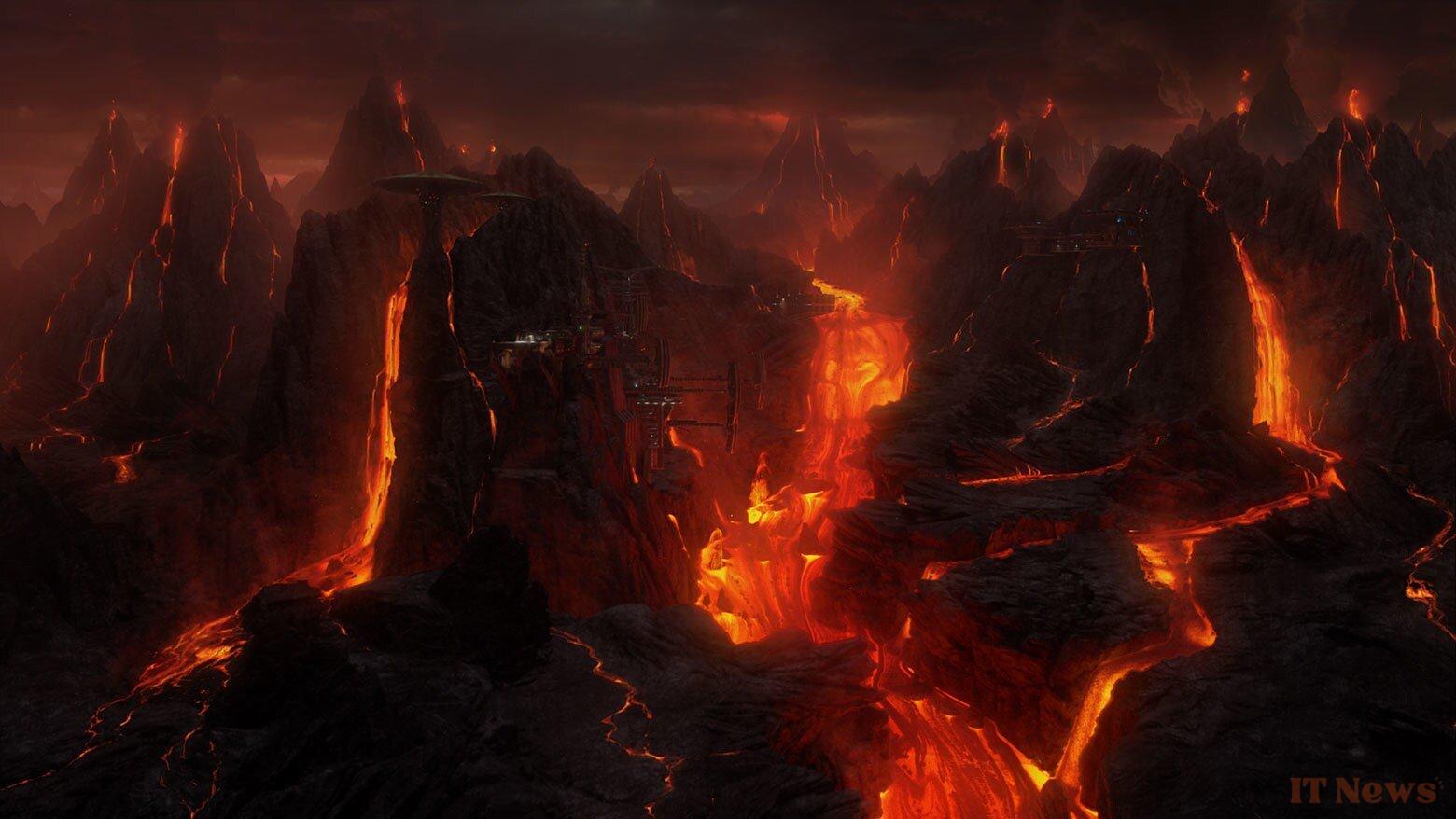Skaro (Doctor Who)
Dr Who is a franchise that is unparalleled in its blending of lighthearted, humorous sequences with much darker themes. This second point is perfectly embodied by Skaro, the home planet of the dreadful Daleks.
For centuries, Skaro was the scene of a merciless war between the Daleks and the Thals, pushing both species to develop an arsenal of cataclysmic power. All these weapons of mass destruction, sometimes nuclear, sometimes chemical, have profoundly transformed this environment. Its once lush and fertile spaces have been transformed into a living hell, with vast areas of deadly radiation and pollution of nerve agents and mutagens that are decidedly not compatible with life as we know it.
Without the Doctor's prowess, the show's protagonists would probably not have stood a chance of surviving in this hostile environment - not to mention the threat posed by the Daleks themselves, who are not exactly known for their compassion and hospitality. Unless you have a copy of the famous TARDIS at your disposal, we can only advise you to avoid Skaro on your next intergalactic trip.
Trisolaris (The Three-Body Problem)
If hostile aliens aren't your cup of tea, you might be tempted to visit Trisolaris, the planet imagined by Liu Cixin in The Three-Body Problem, which was recently adapted into a very good series on Netflix. As its name and that of the work suggest, its particularity is to be located in an extremely chaotic and unstable orbit between three different stars.
Our good old Earth has been orbiting the Sun for a little over 4.5 billion years; the seasons therefore follow one another with metronomic regularity, allowing humanity to anticipate temperature variations. But on Trisolaris, the situation is very different. The name of the series directly refers to a problem well known to physicists: it is incredibly difficult to predict the movements of three celestial bodies interacting through their gravitational forces. Three-body systems are called chaotic, which means that there is no general solution that can accurately describe the behavior of the three objects.
As a result, Trisolaris is prone to catastrophic climate fluctuations that its inhabitants are completely unable to anticipate. When the planet approaches one of the stars without warning, the population is caught off guard by devastating waves of heat and radiation. Conversely, when it moves away from all three stars, it can suddenly be confronted with equally dangerous periods of glaciation. And even during rare periods of relative stability, survival on Trisolaris is anything but child's play. These climate cycles have completely eradicated the flora and fauna, as well as certain vital resources, such as water and nutrients essential for crops. In other words, the planet is virtually barren.
Fortunately for them, the Trisolarians have implemented very specific survival strategies. But without their help, it's a safe bet that a newly arrived Earthling would end up roasted or frozen before even realizing the situation... or that he would end up dying of hunger, thirst or exhaustion after a long crossing of the desert.
Mustafar (Star Wars)
It's common knowledge that volcanism is an incredibly dangerous phenomenon when it reaches extreme proportions. Many researchers even believe that it represents a very real existential threat to humanity—and this is especially true when it reaches such extreme proportions as on Mustafar, the famous volcanic planet imagined by George Lucas.
This planet had the misfortune of finding itself trapped between two gas giants that impose tremendous tidal forces on it. As a result of being tortured by its neighbors, Mustafar is constantly being torn apart from within by tectonic activity that generates enormous amounts of heat—and by extension, volcanic phenomena of terrifying proportions.
Almost the entire surface is covered in lava lakes that make the slightest misstep deadly—all except ideal when you have to move quickly to avoid the gigantic pyroclastic flows that incinerate everything in their path, a bit like Pompeii. But this would almost be a detail compared to the threat posed by the atmosphere itself. The latter is saturated with superheated gases and particles released by this volcanism which, in addition to being incredibly toxic, would carbonize the skin and respiratory system of an average human in the blink of an eye.
If you want to observe volcanoes up close without risking ending up in ashes, it would probably be wiser to favor destinations like Bora Bora or Indonesia. And in the event of a catastrophic eruption, at least you'll have the chance to enjoy it from a dream beach with a cocktail in hand!
Paranatural Planet (Control)
As uninhabitable as they may be, Trisolaris and Mustafar have the advantage of following the laws of physics that allow humanity to understand the world around it. But fiction is also full of environments where these laws are about as valuable as an expired subway ticket, and the video game Control is a prime example.
The game's lore is largely built around spaces called "thresholds," paranatural regions that exist at the intersection of our reality and a universe beyond our comprehension. Here, physics and even reality as we understand it collapse in spectacular fashion. Even though no such planet is specifically mentioned in the games, one can still imagine what a trip to a planet located in such a paranatural space—say, Planet X—would be like. And the result is chilling.
Human physiology and psychology have been shaped over a long period by the mechanisms of evolution, through contact with certain concepts that seem perfectly normal to us. These include constant gravity, the atom-based structure of matter, or even more abstract but still crucial ideas like causality or the linearity of time. But on our Planet X, all these concepts would shatter.
Beyond thresholds, the cause-and-effect relationships that define our daily lives at all scales cease to function. Reality becomes flexible, dynamic, disconnected from any logic, often with catastrophic implications for humans. For example, our poor brain would be completely incapable of assimilating what it is confronted with, and would quickly descend into irreversible madness. But the consequences would not be solely mental.
The game's lore refers to "resonant materials," which exist both in our dimension and in these undefined universes. Once exposed to these substances, our perfectly ordered organisms would lose all coherence; these materials would quickly integrate into our cells, leading to what one researcher described as "dimensional bleeding," where human tissues begin to incorporate impossible geometries. Within minutes, the poor wretch would be "dissolved," transformed into an amalgam of completely aberrant structures, and stripped of everything that makes them human down to the smallest of scales.
Catachan (Warhammer 40K)
The Warhammer 40K universe is known for its brutality. The famous Space Marines, those ruthless, genetically engineered, heavily armed super-zealots, embody this ethos perfectly. In the 40th millennium, there are few entities capable of opposing their biblical-scale crusade, waged to purge all other species for the Emperor of Mankind.
But there are a few regions of the Universe where even these killing machines see their chances of survival melt like snow in the sun: the δτ-class planets, also known as "Deathworlds."
The most famous of these is undoubtedly Catachan. The lush jungles of this seemingly welcoming planet are riddled with species, each more hostile and deadly than the last.
It's quite simple: whether it's complex animals, insects, or even plants, absolutely all the residents of Catachan are equipped to kill in the most horrific conditions imaginable. From carpets of neurotoxic plants to reptiles capable of crushing metal between their jaws and giant, deformed arthropods that only want to dissolve their living prey from the inside out, there is only the embarrassment of choice.
You'll have understood: on Catachan, even the most seasoned Space Marines run a truly enormous risk. And if this is the case for these mutant behemoths equipped with weapons of mass destruction, we can safely say that a normally constituted human would have a hard time getting past the one-minute mark...






0 Comments